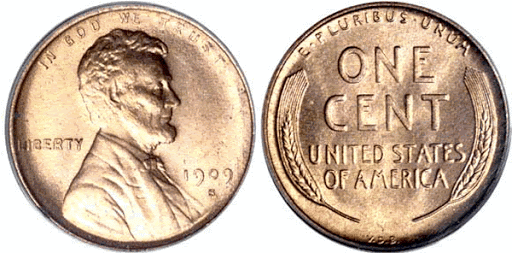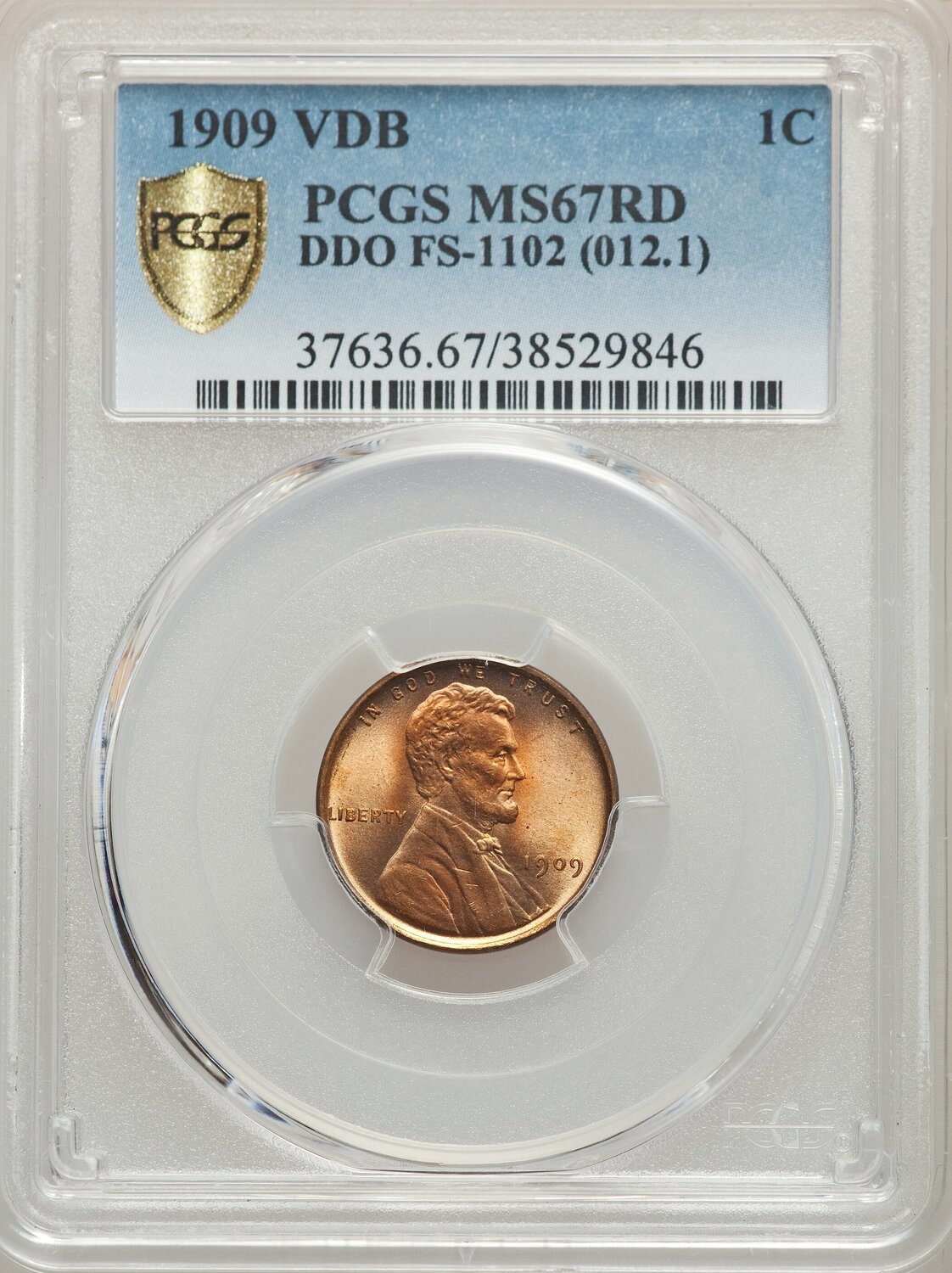The Perennially Popular 1909 VDB Pennies
Posted by Bullion Shark on Nov 14th 2024
The Perennially Popular 1909 VDB Pennies
Victor David Brenner – the widely admired sculptor and medalist who created the original designs for both sides of the Lincoln penny – immigrated to the United States from Lithuania (where he was born in 1871) at the age of 19 in 1890. His father taught his son those skills to be a gem and seal engraver, and in the late 1890's he studied in Paris with the great French medalist Oscar Roty.
The young Victor David Brenner also had a keen interest in coins and medals and became active in the numismatic hobby, joining the American Numismatic Association in 1902 and later helping to found the New York Numismatic Club in 1908, which was a very influential coin club at the time.
By this time, Brenner was producing dies for medals and was commissioned to produce the 1903 Amerigo Vespucci medal that celebrated the Italian explorer who discovered America. In 1907 he created a medal and plague with a profile of President Abraham Lincoln that caught the attention of President Theodore Roosevelt.
A year later Brenner and Roosevelt discussed the idea of using the plaque as the basis for the design of a new coin to honor Lincoln as the centennial of his birth in 1809 approached. In a January 1909 letter the Treasury department told The Numismatist magazine that Roosevelt had given his consent to placing a bust of Lincoln on a new coin and Brenner submitted models of Lincoln busts. In March 1909 the decision was made to place a right-facing Lincoln profile on the penny and a design of wheat stalks on the reverse that represented national prosperity at a time when the U.S. was indeed a prosperous country.
The new Lincoln pennies debuted to widespread acclaim from the public and coin collectors on August 2, 1909 when long lines formed wherever the coin was available for purchase with demand so high that individual purchasers were limited to a certain number of coins. The new coin – a one year type coin for the wheat penny series that also was the first non-commemorative coin to feature a portrait of an American president -- was minted to the tune of 22,213,575 examples.
VDB Penny Controversy
However, the coin soon became embroiled in controversy because of the appearance of the initials “VDB” on the reverse of the coin under “UNITED STATES OF AMERICA” which some people felt was too prominent a place to credit the designer, that the initials were too large or that they amounted to free advertising for Brenner. Although the initials had been used in lieu of Brenner’s last name as the artist first proposed, Treasury Secretary Franklin MacVeigh claimed he did not know the initials would be used on the coin until he saw struck examples.
In many ways this was an odd controversy since it was not only a centuries-old tradition dating to the ancient Greeks to credit a coin’s designer on the coin but was also a longstanding American tradition as seen on the coins designed by James B. Longacre such as the Indian Head penny and his gold coins through 1908 that featured the initials “JBL”, among other coins that followed this practice. Brenner himself also protested the criticism of using his initials in numismatic publications at the time.
1909-S VDB Penny
There were plans to replace “VDB” with a more inconspicuous “B,” but Treasury officials said it would take at least two weeks to remove the “VDB” from the master hub and that it would be simpler and more efficient to just erase the initials and not add a “B”.
Another reason for not adding the “B” is that then-Chief Engraver Charles E. Barber did not want people to think he had designed the coin since he was not a fan of the new design.
In 1918 after Barber died the prior year, and there was a new Treasury Secretary, Brenner’s three initials were restored to the penny this time in smaller letters on the obverse.
Production of the non-VDB 1909 pennies began just days later on August 12, and 72,702618 of those coins were made along with 1,825,000 1909-S coins without the VDB.
But the wheat penny that has attracted the greatest attention in numismatic history is the 1909-S VDB struck at the San Francisco mint whose mintage was only 484,000 or 1.7% of the coins struck at the Philadelphia Mint that year with the VDB initials.
The 1909-S VDB wheat penny is a coin that is always in demand because of its low mintage and the VDB controversy.
Thankfully, it is not too hard to find nice mint state examples of the coin and thousands of uncirculated coins are in the marketplace. But they are not cheap because of the coin’s huge popularity, and well struck examples with full details are the norm for this issue.
Those on a budget will want to procure the 1909 VDB without the “S” mintmark.
PCGS values
A regular 1909 VDB can be obtained in Brown for $26 in MS60, $40 in MS63, $80 in MS65 and $165 for MS66, while a Red Brown example of the coin is more expensive at about $50 in MS63, $100 in MS65, $185 in MS66 and in MS65 Red $175 ( or a little more for a nice example of that grade and color) and $350 in MS66 Red and then gets a lot more pricey in MS67 at $850 and $1,000 for Red Brown and Red coins.
For the always popular 1909-S VDB plan to spend at least $675 for a Brown Good 4, $1350 for an MS60, $1850 for an MS63 and $2850 for an MS65 and substantially more for the top grades of MS66 and MS67.
In Red Brown prices run just slightly more than Brown in MS60 and MS63 and $3500 for MS65, while in Red values are $1750 in MS60, $2200 in MS63 and $6250 in MS65.
A top-quality Red runs $11,000 in MS66 and the ultimate example in MS67 is a cool $65,000. At that grade there are just 15 Red coins, and 1 each for Brown and Red-Brown graded by PCGS.
While those prices may seem high to the average collector, a nice 1909-S VDB penny is likely to be a good long-term addition to you r coin collection.





